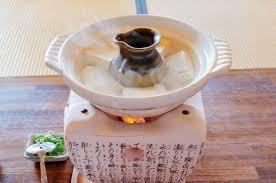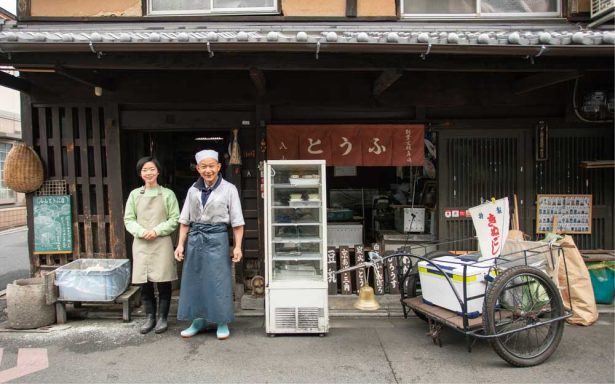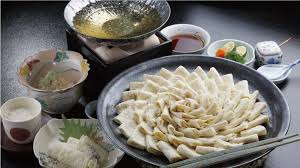Tofu & Yuba 豆腐と湯葉
Indispensable for Kyoto cuisine 京料理に絶対欠かせない

Kyoto is famous for high-quality tofu. Tofu in Kyoto has been enjoyed as part of the Buddhist vegetarian cuisine and kaiseki course meals. Tofu is an important part of Buddhist vegetarian cuisine because it provides protein. It is used in various forms: hot or cold, boiled or fried. The excellent, soft well water in Kyoto is said to contribute to its quality.
京都は品質の良い豆腐で知られています。京都の豆腐は精進料理や懐石料理の一品として楽しまれてきました。タンパク質を提供する豆腐は、精進料理の重要な材料です。温かいものや冷たいもの、煮たものや揚げたものなど、様々な形で使われます。軟水である良質な京都の井戸水のおかげで、良い豆腐ができるのだと言われています。
How to make Tofu 豆腐の作り方

To make Tofu, you first soak soybeans in water. You then make this into a paste, and cook. Filter the cooked paste and add a coagulant called nigari. The mixture will solidify into delicious tofu.
豆腐を作るには、まず最初に大豆を水に浸します。それをペースト状にし、加熱します。そして濾過しにがりと呼ばれる凝固剤を加えます。
Yuba was brought from China to Kyoto 湯葉は中国から京都にもたらされました

Yuba is a by-product of tofu. It is basically the film that forms on the surface of soy milk when it is boiled. Yuba can be purchased dried or fresh. Dried yuba is often put in soup. Fresh yuba is enjoyed as is with soy sauce or deep-fried. It is also used as a wrap to make rolls.
湯葉は豆腐の副産物です。基本的に豆乳を煮た時に表面に形成される膜のことを言います。湯葉は、乾燥湯葉または生湯葉として買い求める事ができます。乾燥湯葉はよく吸い物に入れられます。生湯葉はそのまま醬油で食べたり揚げたりします。巻物を作る時にも使われます。
関連する投稿
- 京漬物 Kyoto`s Pickles
- Buddhist Vegetarian Cuisine 精進料理
- Kyoto Vegetables 京野菜
- 京都の水 Kyoto Water
- Nishiki Market 錦市場
現在の記事: Tofu & Yuba 豆腐と湯葉






